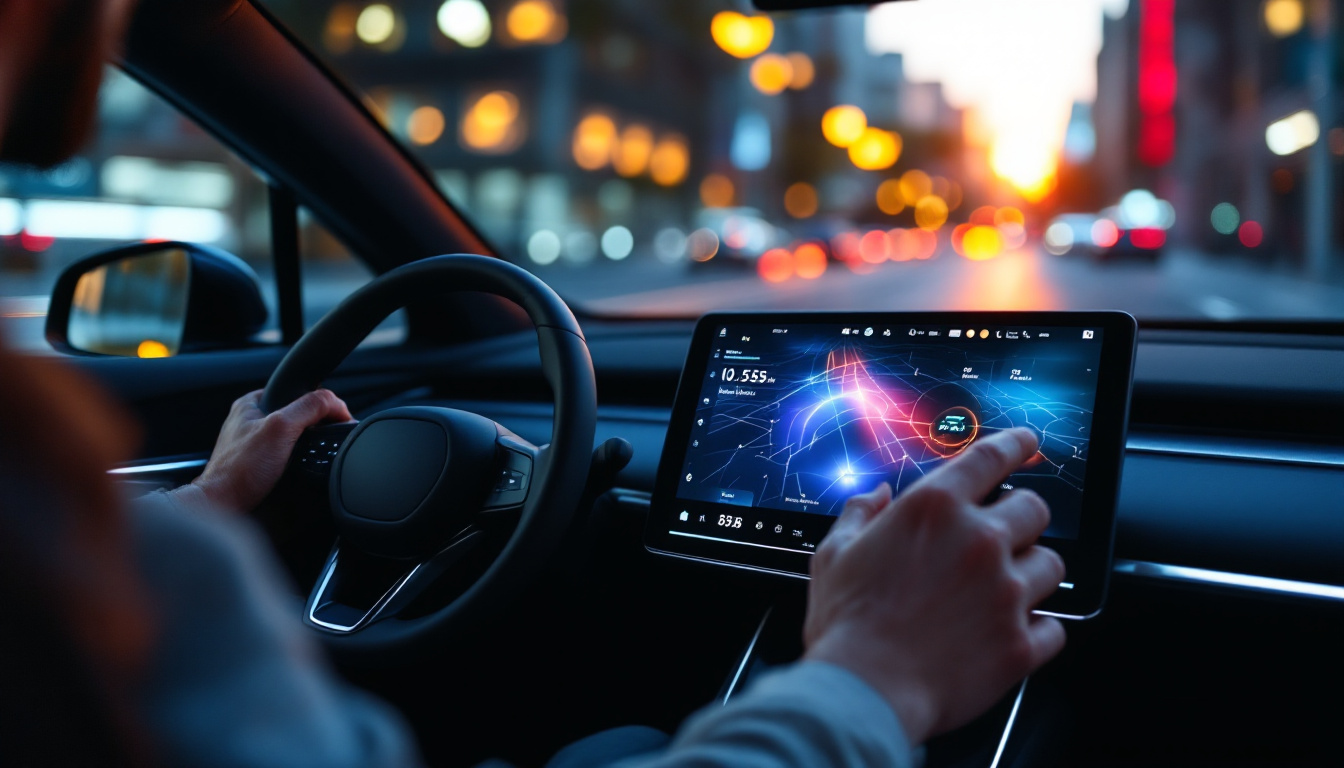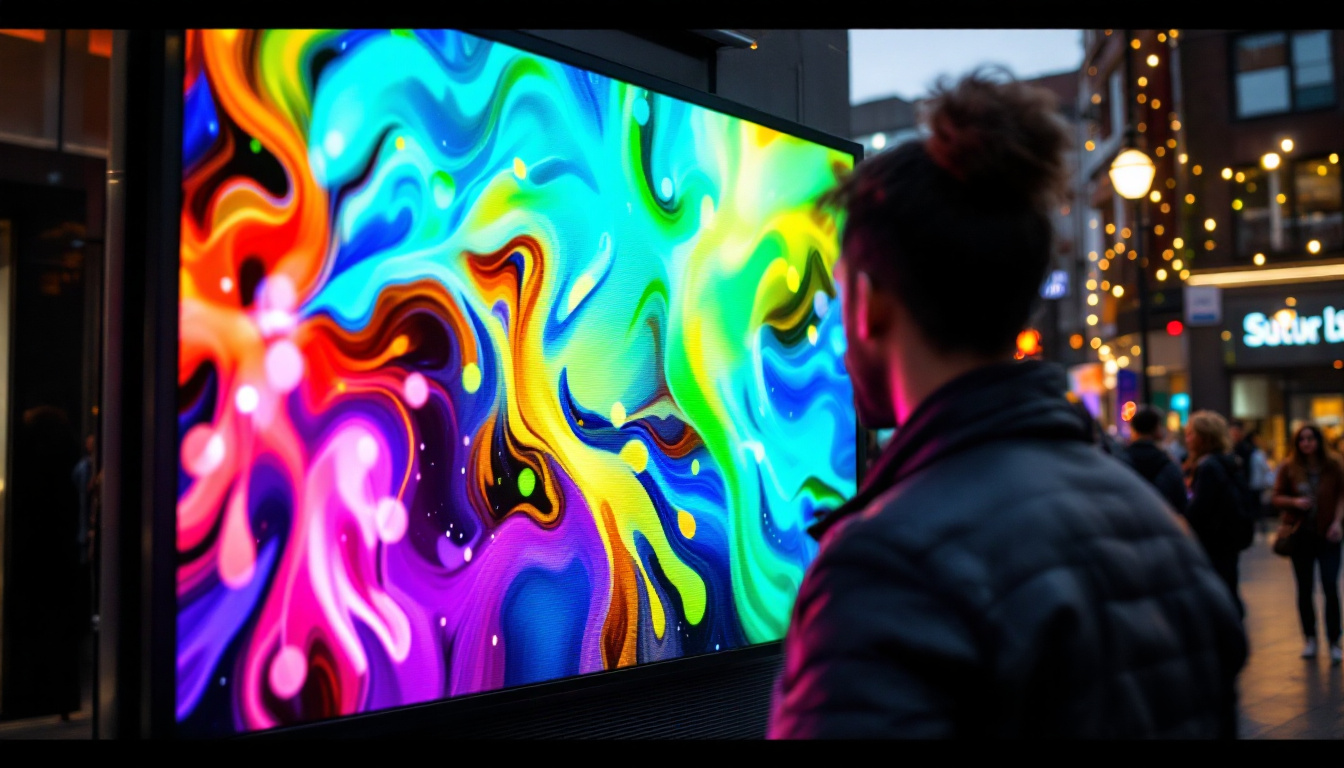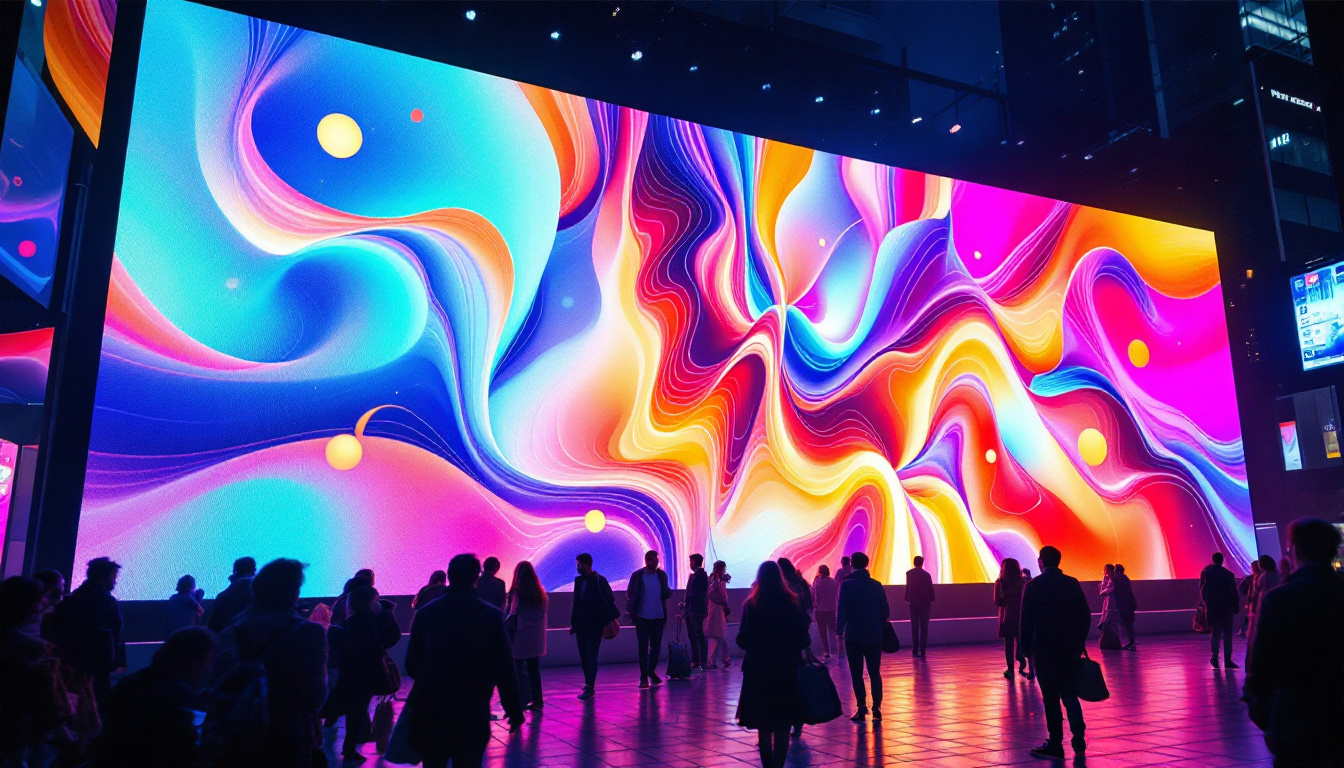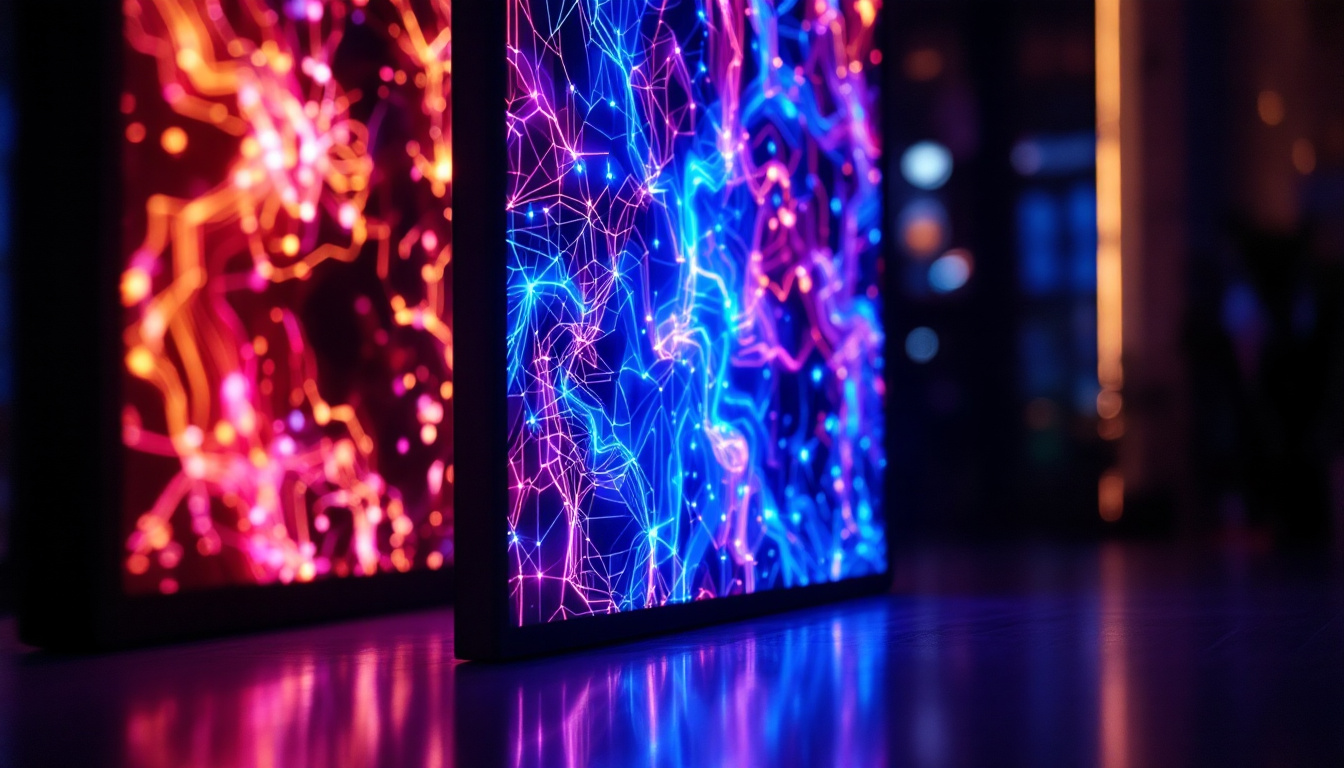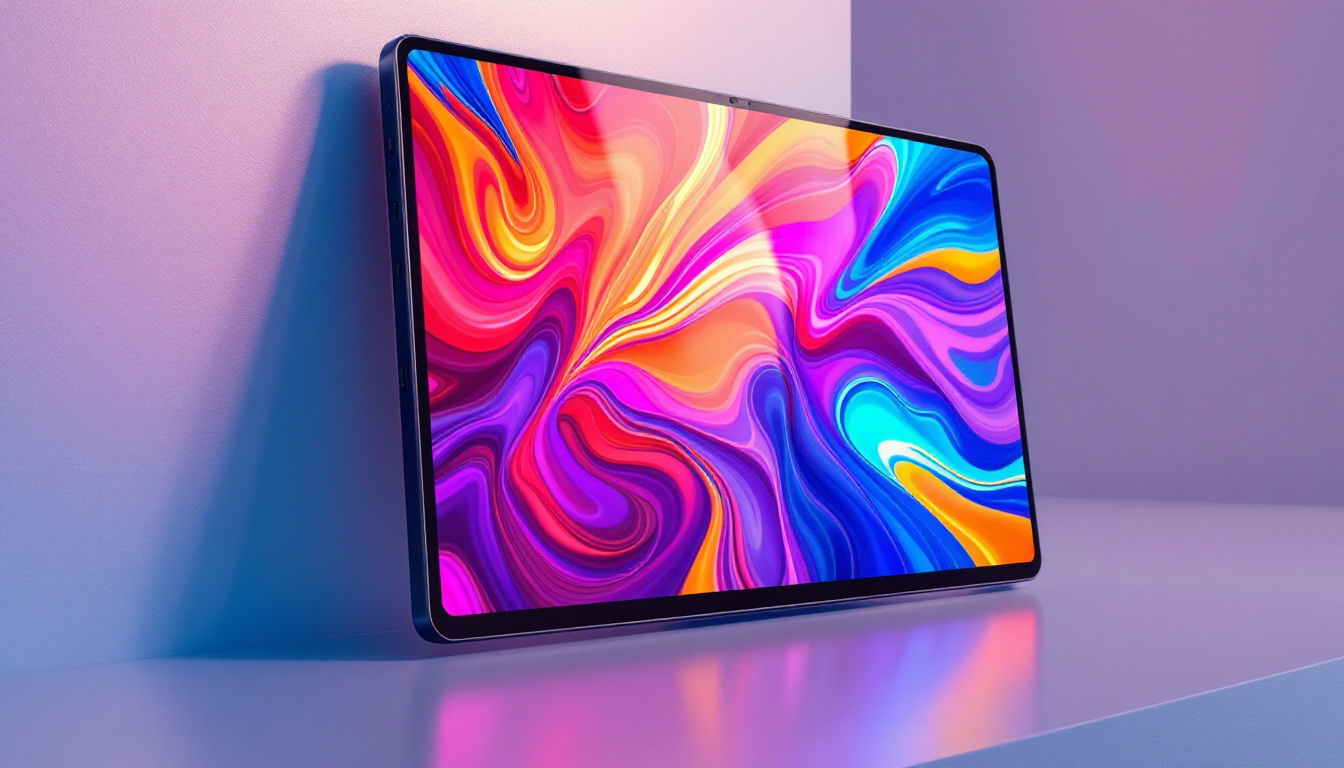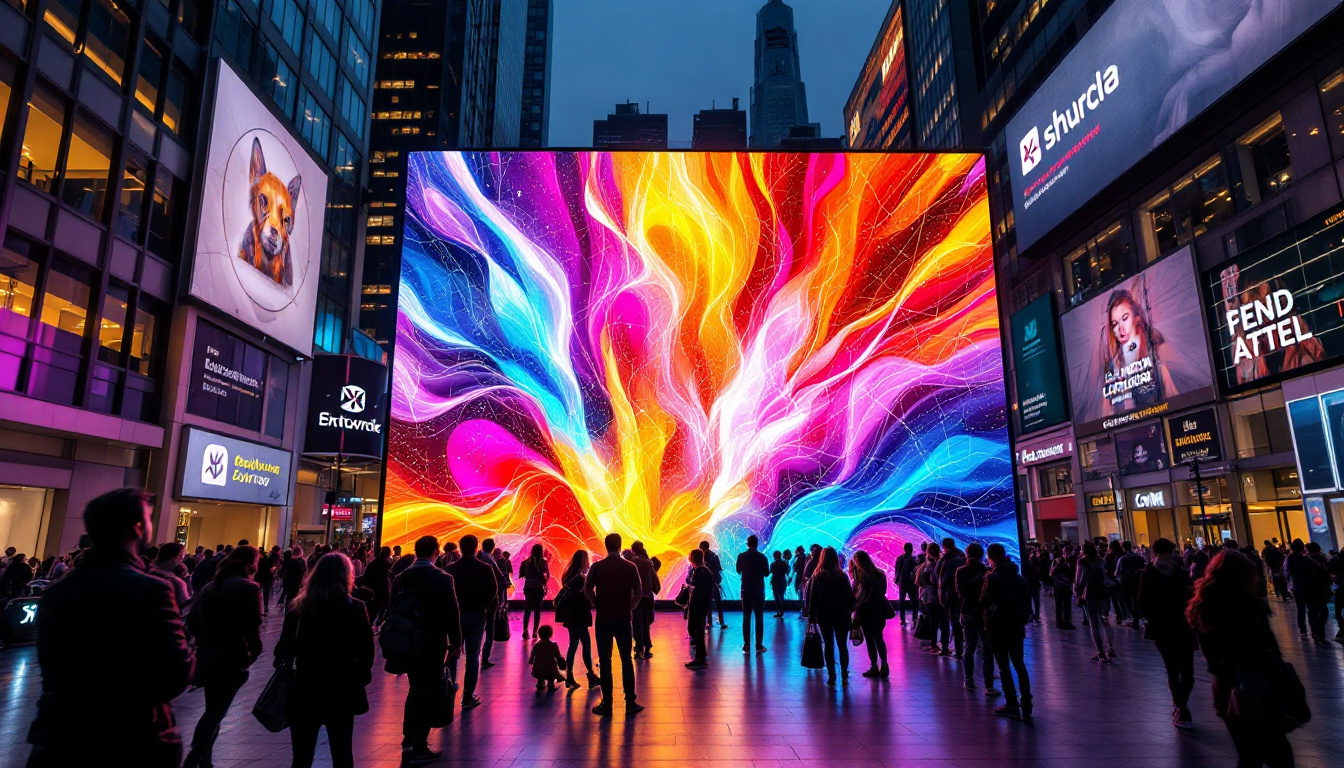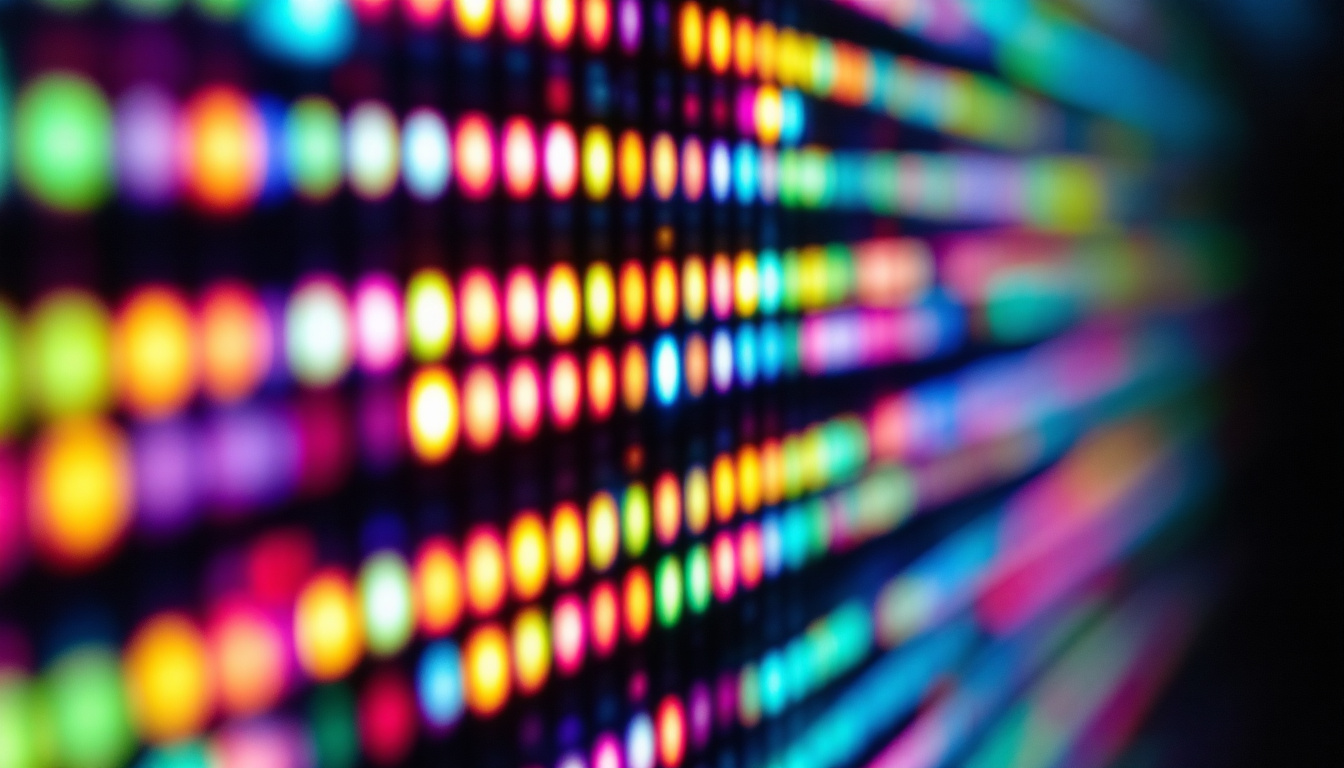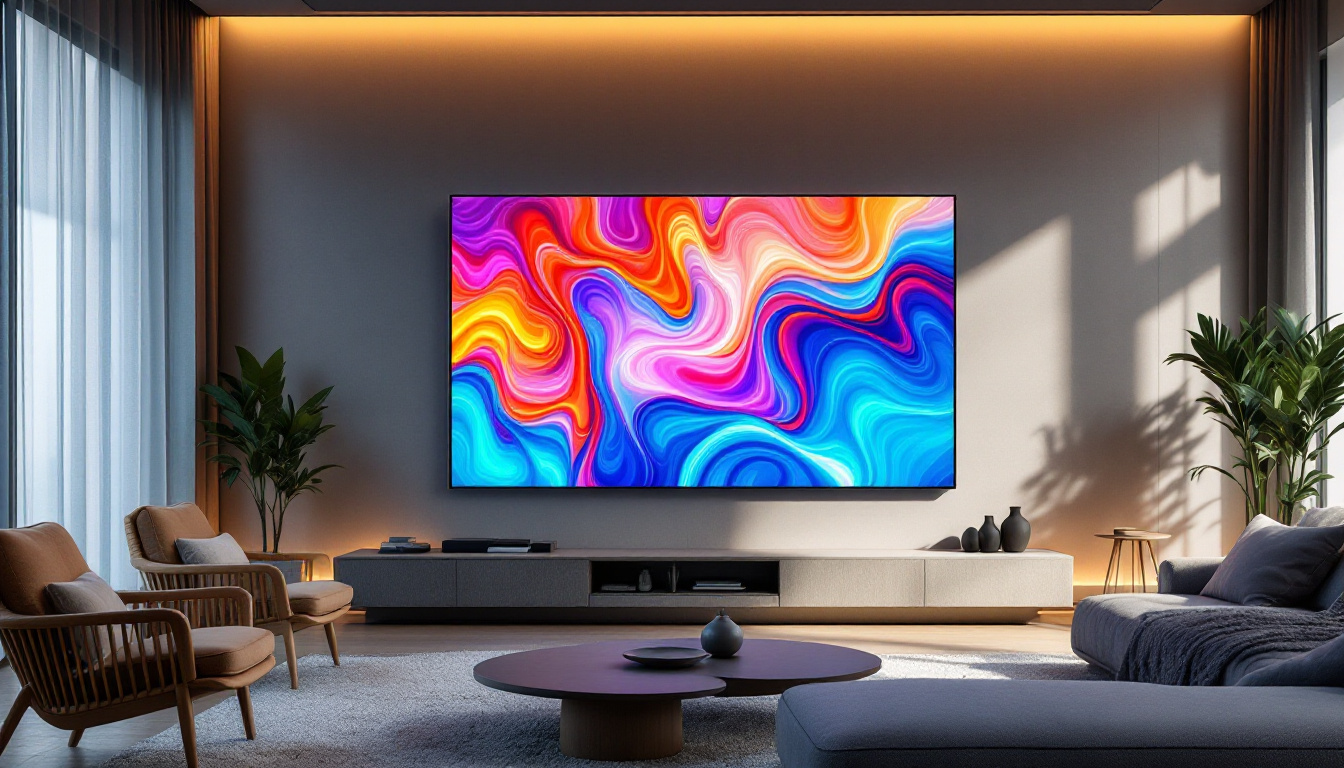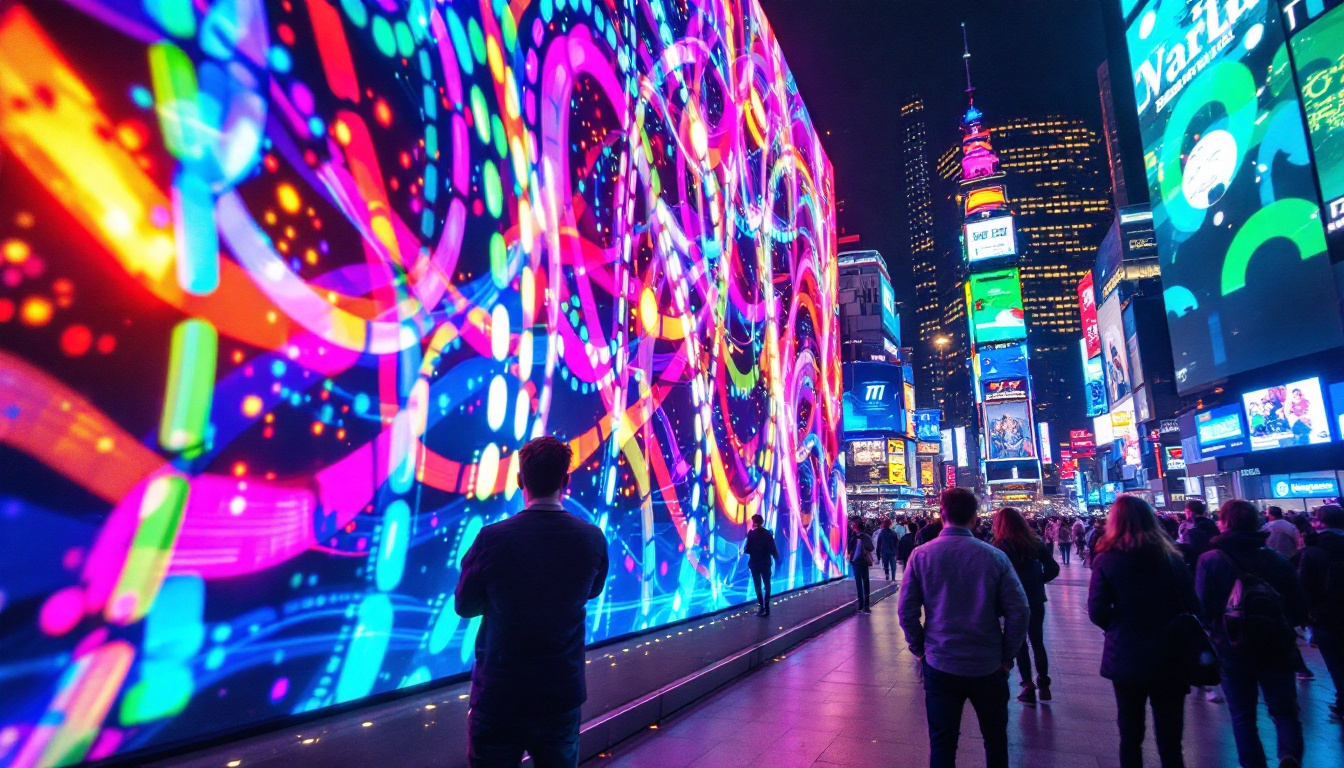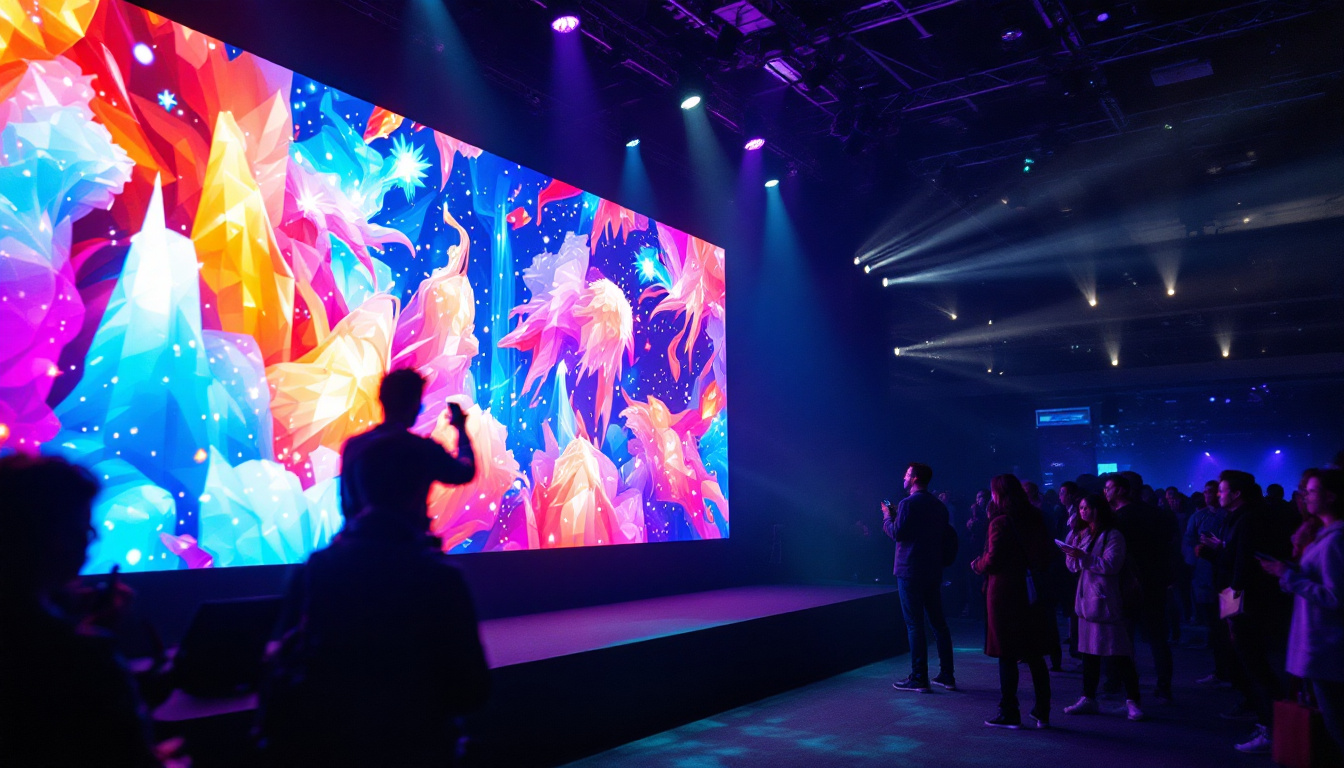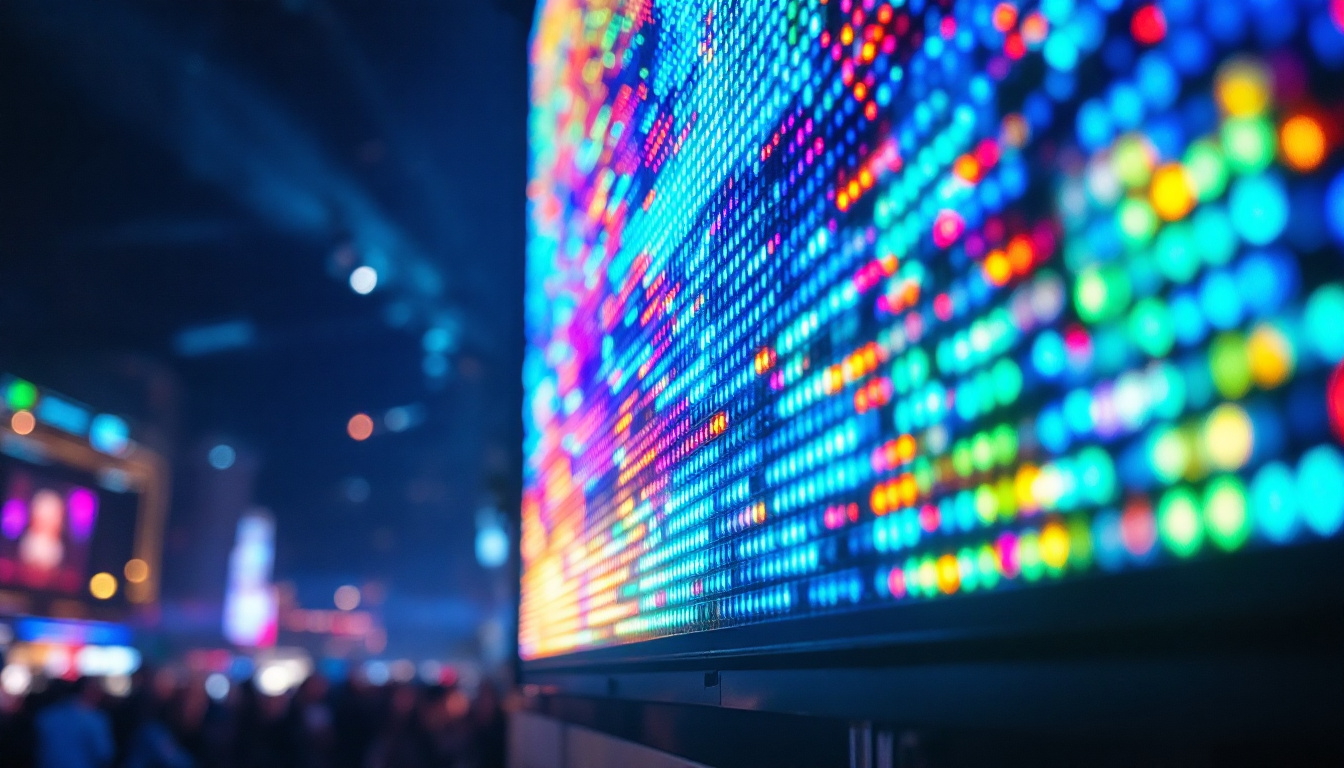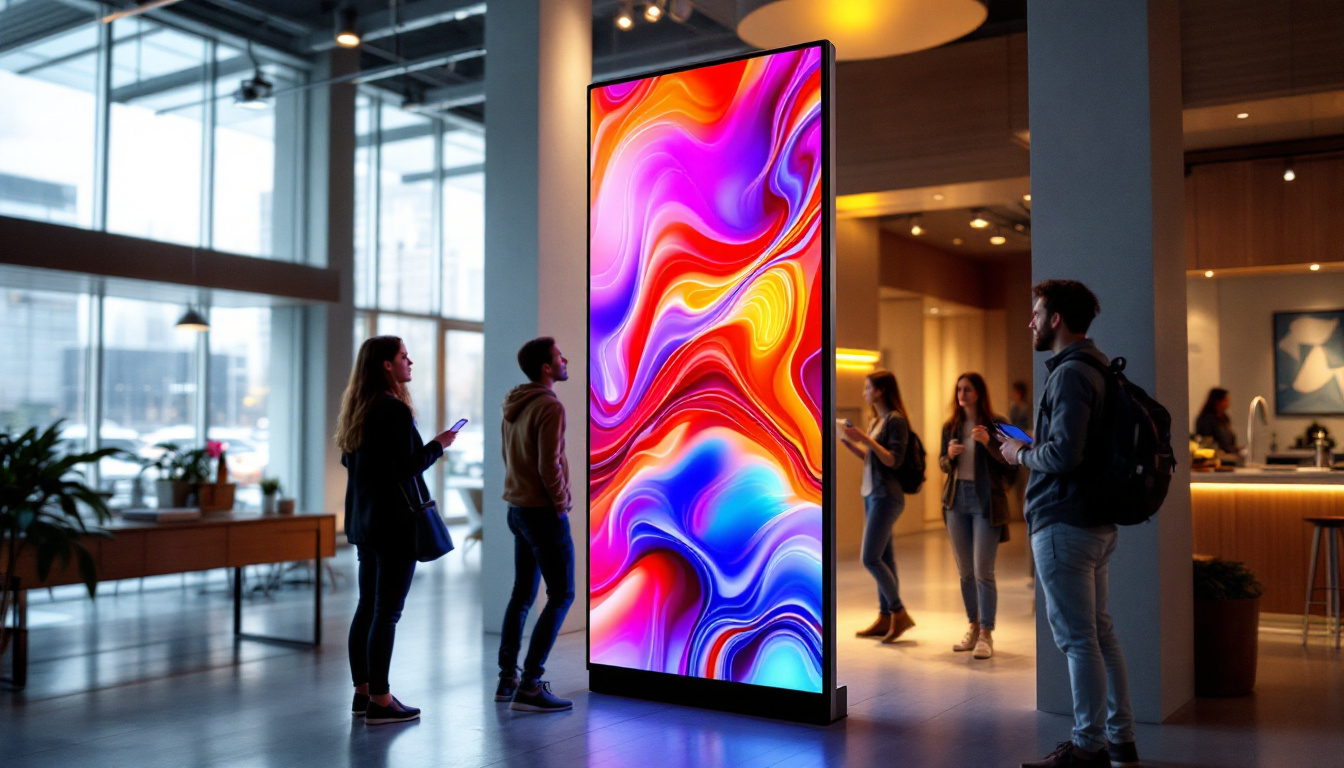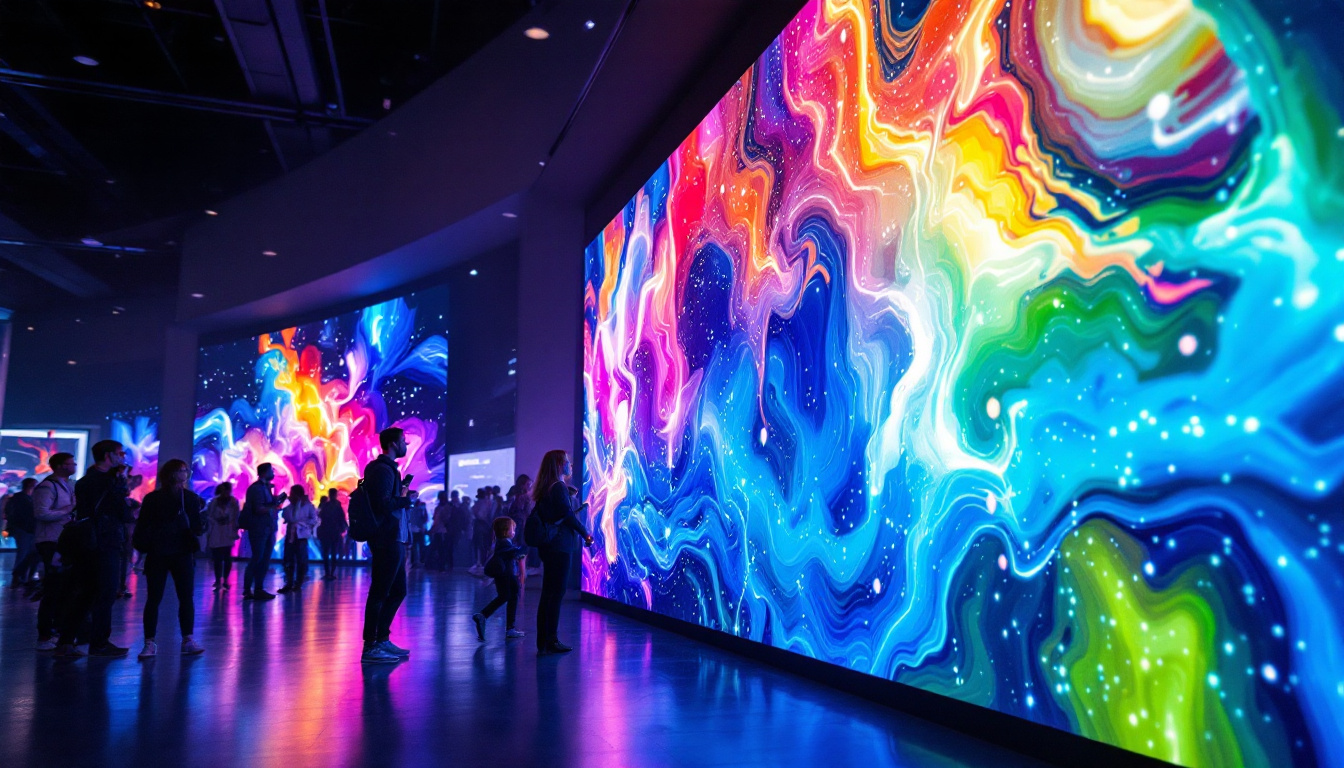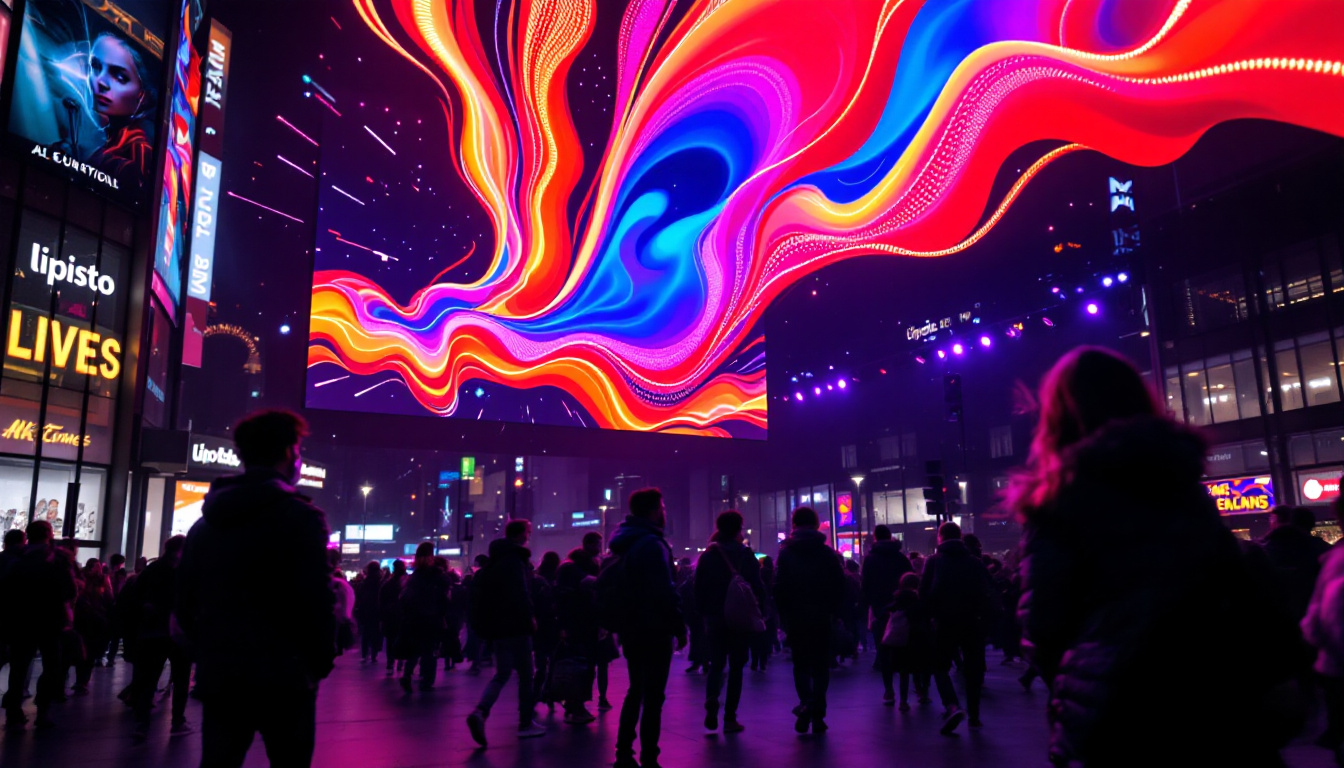In the rapidly evolving world of automotive technology, digital screens have become an integral part of modern vehicles. Among these, LED displays stand out for their brightness, energy efficiency, and versatility. This article delves into the various aspects of LED displays in cars, exploring their functionality, advantages, and the future of digital screens in the automotive industry.
Understanding LED Displays
LED, or Light Emitting Diode, displays utilize semiconductor technology to emit light when an electric current passes through them. This technology has revolutionized how information is presented in vehicles, providing clear and vibrant visuals that enhance the driving experience. The shift from traditional display technologies to LED has led to significant improvements in energy efficiency and durability, making them a popular choice for modern automotive design.
How LED Displays Work
LED displays consist of numerous tiny diodes that emit light in various colors. When these diodes are arranged in a matrix, they can create images and text that are easily readable under different lighting conditions. The basic principle involves manipulating the intensity and color of light emitted by each diode to produce the desired visual output. This capability allows for dynamic content, such as animated alerts or changing navigation prompts, which can significantly improve user interaction and safety.
This technology allows for high contrast ratios and wide viewing angles, making LED displays suitable for various applications within a vehicle, from dashboard indicators to infotainment systems. Furthermore, advancements in LED technology have led to the development of OLED (Organic Light Emitting Diode) displays, which offer even greater flexibility in design and superior color accuracy. These displays can be curved or shaped to fit unique dashboard layouts, providing a more integrated and aesthetically pleasing look.
Types of LED Displays in Cars
There are several types of LED displays used in vehicles, each serving specific purposes. Common types include:
- Instrument Cluster Displays: These are the primary displays located behind the steering wheel, showcasing essential driving information such as speed, fuel level, and engine temperature. The integration of customizable themes and colors allows drivers to personalize their experience, making it not only functional but also visually appealing.
- Infotainment Screens: Larger displays located in the center console, these screens provide access to navigation, multimedia, and connectivity features. Many modern infotainment systems now support touch functionality and voice commands, enabling drivers to interact with the system safely while keeping their focus on the road.
- Head-Up Displays (HUDs): Projecting information onto the windshield, HUDs allow drivers to access critical data without taking their eyes off the road. This technology enhances situational awareness by displaying speed, navigation directions, and even safety alerts directly in the driver’s line of sight, minimizing distractions.
Additionally, LED technology is being utilized in rear and side mirror displays, which can show blind-spot alerts and other safety information. This integration of LED displays into various vehicle components not only improves functionality but also enhances the overall driving experience by providing real-time data that can assist in decision-making on the road. As automotive technology continues to evolve, the role of LED displays is expected to expand further, incorporating more advanced features such as augmented reality overlays and adaptive lighting systems that respond to driving conditions.
Advantages of LED Displays in Vehicles
LED displays offer numerous advantages that enhance both functionality and aesthetics in automotive design. Understanding these benefits can help consumers appreciate the value of modern digital screens in cars.
Brightness and Visibility
One of the primary advantages of LED displays is their exceptional brightness. They can produce vivid colors and sharp images, making them easily readable in various lighting conditions, from bright sunlight to dimly lit environments. This visibility is crucial for driver safety, ensuring that critical information is always accessible. Moreover, the high contrast ratio of LED displays allows for clearer differentiation between various elements on the screen, such as navigation prompts and warning signals, reducing the cognitive load on drivers and enabling quicker decision-making.
Energy Efficiency
LED technology is known for its energy efficiency compared to traditional display technologies. LED displays consume less power, which can contribute to improved fuel efficiency in vehicles. This is particularly beneficial for electric and hybrid cars, where conserving energy is essential for maximizing range. Additionally, the lower heat output of LED displays means that they can operate without excessive strain on the vehicle’s electrical system, further enhancing overall energy management and contributing to a more sustainable automotive ecosystem.
Durability and Longevity
LED displays are also more durable than their LCD counterparts. They are less susceptible to damage from vibrations and shocks, making them ideal for the automotive environment. Additionally, LED technology has a longer lifespan, which means fewer replacements and lower maintenance costs for vehicle owners. This durability is especially advantageous in off-road vehicles, where exposure to rough terrains can lead to significant wear and tear on conventional displays. Furthermore, the robust nature of LED screens allows them to withstand extreme temperatures and humidity, ensuring reliable performance in diverse climates and conditions.
Enhanced User Experience
Beyond their technical advantages, LED displays significantly enhance the user experience within vehicles. The integration of touch-sensitive LED screens allows for intuitive interaction, enabling drivers and passengers to easily navigate through infotainment systems, adjust settings, and access navigation tools with minimal distraction. This seamless interaction fosters a more engaging driving experience, as users can personalize their interface to suit their preferences. Additionally, many modern LED displays support advanced features such as voice recognition and gesture control, further elevating convenience and safety by minimizing the need for physical contact with controls while driving.
Environmental Impact
In addition to their energy efficiency, LED displays contribute positively to environmental sustainability. Their longer lifespan means that fewer electronic components end up in landfills, reducing waste and the environmental footprint associated with manufacturing and disposing of traditional display technologies. Furthermore, as the automotive industry increasingly shifts towards greener solutions, the adoption of LED technology aligns with broader efforts to create eco-friendly vehicles. By choosing LED displays, manufacturers can not only enhance vehicle performance but also demonstrate a commitment to environmental stewardship, appealing to a growing demographic of eco-conscious consumers.
Applications of LED Displays in Modern Vehicles
LED displays are versatile and can be found in various applications throughout modern vehicles. Their adaptability allows manufacturers to integrate them seamlessly into different systems, enhancing the overall user experience.
Navigation and Infotainment Systems
One of the most prominent applications of LED displays is in navigation and infotainment systems. These screens provide drivers with access to maps, music, and connectivity features. The intuitive interfaces and responsive touch capabilities make it easier for drivers to interact with their vehicles while keeping their focus on the road.
Driver Assistance Features
Many modern vehicles come equipped with advanced driver assistance systems (ADAS) that rely on LED displays to communicate vital information. For instance, lane departure warnings, collision alerts, and adaptive cruise control notifications are often presented on the instrument cluster or HUDs, ensuring that drivers receive timely alerts.
Customizable Interfaces
Another exciting application of LED displays is the ability to customize interfaces. Many manufacturers allow drivers to personalize their dashboard layouts, choosing which information to display prominently. This level of customization enhances user satisfaction and allows drivers to tailor their driving experience to their preferences.
Challenges and Considerations
While LED displays offer numerous advantages, there are also challenges and considerations that manufacturers and consumers must address. Understanding these aspects can help in making informed decisions when it comes to vehicle technology.
Cost Factors
One of the primary challenges associated with LED displays is their cost. Although prices have been decreasing over the years, high-quality LED screens can still be more expensive than traditional display technologies. This can impact the overall price of a vehicle, especially in budget models.
Screen Glare and Reflection
Another consideration is screen glare and reflection. While LED displays are bright, they can also reflect sunlight or artificial light, which may hinder visibility in certain conditions. Manufacturers are continually working on anti-glare technologies and coatings to mitigate this issue, but it remains a factor to consider when evaluating display quality.
Software and Compatibility
As vehicles become increasingly connected, the software that powers LED displays must be robust and compatible with various devices and applications. Ensuring seamless integration with smartphones and other technologies is crucial for providing a smooth user experience. This requires ongoing updates and support from manufacturers, which can be a challenge in the rapidly changing tech landscape.
The Future of LED Displays in Automotive Technology
The future of LED displays in the automotive industry looks promising, with ongoing advancements in technology and design. As vehicles become more connected and autonomous, the role of digital displays will continue to evolve.
Integration with Augmented Reality
One exciting development on the horizon is the integration of LED displays with augmented reality (AR). This technology has the potential to revolutionize how information is presented to drivers. For example, AR could overlay navigation directions directly onto the road, providing a more intuitive and immersive driving experience.
Enhanced User Interfaces
As technology advances, user interfaces will become even more sophisticated. Future LED displays may incorporate gesture recognition, voice commands, and haptic feedback, allowing for more intuitive interactions. This will help reduce distractions and enhance overall safety while driving.
Environmental Considerations
With increasing awareness of environmental issues, manufacturers are also focusing on sustainability in the production of LED displays. This includes using eco-friendly materials and energy-efficient manufacturing processes. As the automotive industry moves towards greener practices, LED displays will play a crucial role in reducing the environmental impact of vehicles.
Conclusion
LED displays have transformed the automotive landscape, offering enhanced visibility, energy efficiency, and versatility. As technology continues to advance, these displays will play an increasingly vital role in improving the driving experience. From navigation systems to driver assistance features, LED displays are here to stay, and their future looks brighter than ever.
As consumers become more aware of the benefits and capabilities of LED technology, the demand for vehicles equipped with advanced digital screens will likely continue to grow. Understanding the various aspects of LED displays can help consumers make informed choices when selecting their next vehicle, ensuring they enjoy the full range of benefits that modern automotive technology has to offer.
Explore the Future of Automotive Displays with LumenMatrix
As you consider the advancements and benefits of LED display technology in vehicles, LumenMatrix invites you to experience the pinnacle of digital screen innovation. Our commitment to excellence in LED display modules extends to a wide array of solutions tailored to meet your automotive needs. From the immersive Indoor LED Wall Display to the dynamic Vehicle LED Display, and the cutting-edge LED Transparent Display, we offer an extensive range of products designed to elevate your driving experience. Discover how LumenMatrix is driving the future of visual communication in the automotive industry. Check out LumenMatrix LED Display Solutions today and see the difference for yourself.

